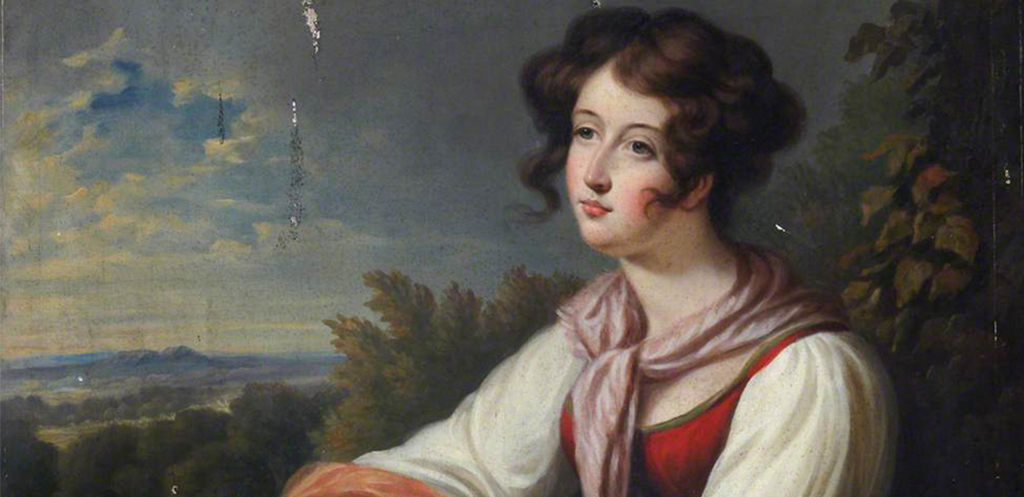For more than a century, Helen Craik's poetry has been considered lost.
The Scottish writer published five gothic romance novels by the early 1800s but never put her poetry in print. In 1919, excerpts of her poetry appeared in a newspaper, but the source of these poems – a notebook she presented to a family friend – disappeared.
Earlier attempts to find the notebook proved unsuccessful. But Craik's poetry manuscript has now been found and published this month by two University of South Carolina faculty members.
Emeritus Professor Patrick Scott and Rachel Mann, an alumna and instructor in the Department of English, co-edited Poems by a Lady. Along with autobiographical writing and documents, the book collects 39 poems that Craik wrote out in 1790.
Scott, who tracked down the manuscript, says the publication lays the groundwork for a new chapter of academic work on Helen Craik and Scottish women writers of the late 18th Century.
“Here was this remarkable thing: a manuscript that no Craik fan had seen for over 100 years,” Scott says. “There is no modern criticism about Craik’s poetry.”
Mann says having the opportunity to transcribe and research these unpublished poems was “beyond my wildest dreams.” Her biggest takeaway is that Craik’s poetry demonstrates the breadth and talent of women writers, many of whom are lost in the archives.
“She’s remarkable, but Craik also isn’t that different from her peers at that time. There were a lot of women just like her who were working in manuscript,” Mann says.
Finding Helen Craik
For Scott, unearthing Craik’s work was completely unexpected. As a scholar of poet Robert Burns, Scott was familiar with Craik because of her friendship with Burns, who visited the family, exchanged letters with them and was known to have written four lines of verse on a blank page in one of Helen Craik’s notebooks.
“It suddenly occurred to me that Burns’s work would be much easier to track in the archives than Craik’s,” Scott says.
His hunch was right: the Beinecke Library at Yale University had a record of Burns’s four lines on a notebook in their holdings. And in fact, their catalogue showed that this very notebook was the manuscript of Helen Craik’s poems.
Scott reached out to Mann, who as a graduate student at USC had worked with him on a digital archive project on another Scottish writer. Mann holds her doctorate in 18th century British literature and has researched the circulation of manuscripts as a literary form.
During Craik’s time and even earlier, Mann says, it was common for members of the upper class to write for their social circle only. Publishing in print carried a stigma many upper-class women might have wished to avoid.
“Today, we often think printed or published work must be superior, when really manuscript poetry, handwritten and unpublished, at that time was equally esteemed,” Mann says.
It’s exciting that there’s all this work that no one has studied before. There are several poems you could write articles about right now, and it’s all just waiting to be done.
- Patrick Scott
One of the most challenging parts of deciphering the manuscript was documenting all of Craik’s cultural references, literary allusions and quotations.
Scott and Mann again turned to libraries for help in tracking down the context for Craik’s work.
“There was one poem called ‘To Mr. D: from Goat Whey Quarters,’ which I initially thought was referring to living on an agricultural estate,” Mann says. “But I found a letter from a doctor who was treating her sister’s illness with goat whey, which also gave us a date for this poem.”
Mann and Scott completed much of the research for the annotations at USC, which is home to an extensive collection of Scottish writing, including the Irvin Department of Rare Book’s G. Ross Roy Collection.
“This kind of poet expects that the reader will recognize quotations, and she might be quoting Milton, or she might be alluding to a quote indirectly or quoting someone less known,” Scott says. “Annotating a manuscript is fun, but you have to decide what to include.”
Now that Poems by a Lady is published, future students of Scottish literature and women’s literature will be able to dig more deeply into Craik’s poems and explore what they mean.
“It’s exciting that there’s all this work that no one has studied before,” he says. “There are several poems you could write articles about right now, and it’s all just waiting to be done.”
Mann is also excited to see the scholarship that results from the book’s publication, but she thinks Craik’s writing may hold interest for casual readers as well.
“I love her dramatic first-person monologues. They’re very dark and kind of violent and hint at the gothic. They’re often based on real-life events and stories in the newspaper, and her poems reconfigure the narrative to tell these events from a different perspective,” she says.
